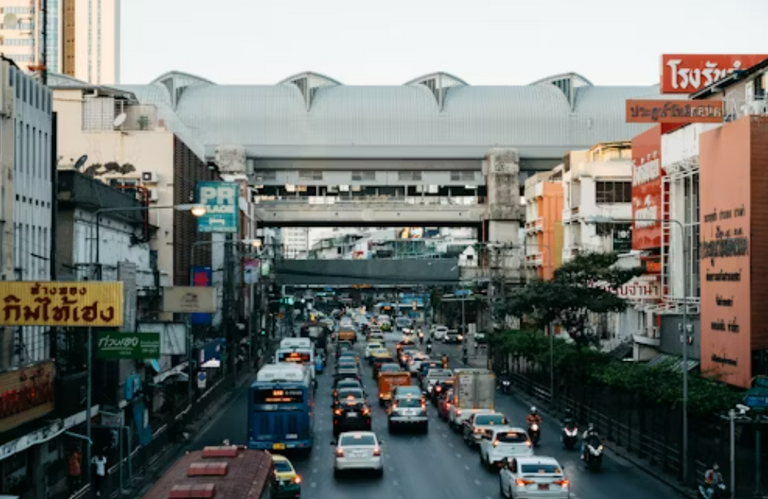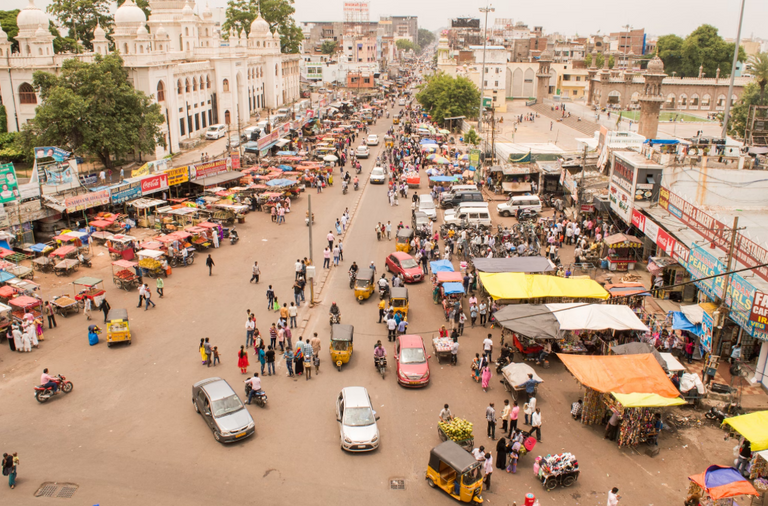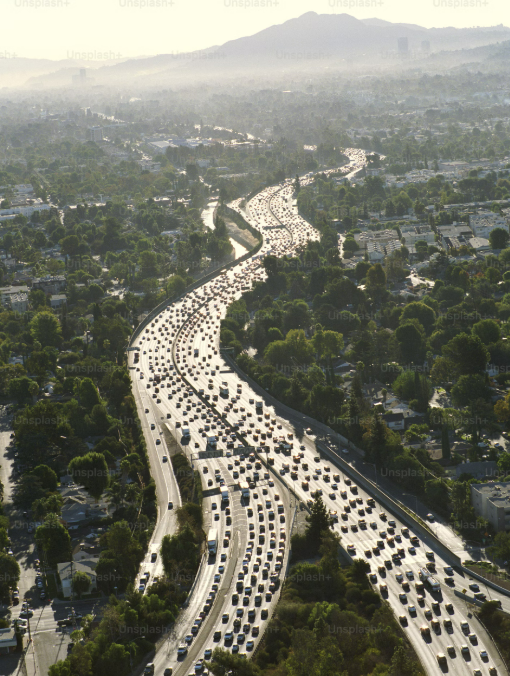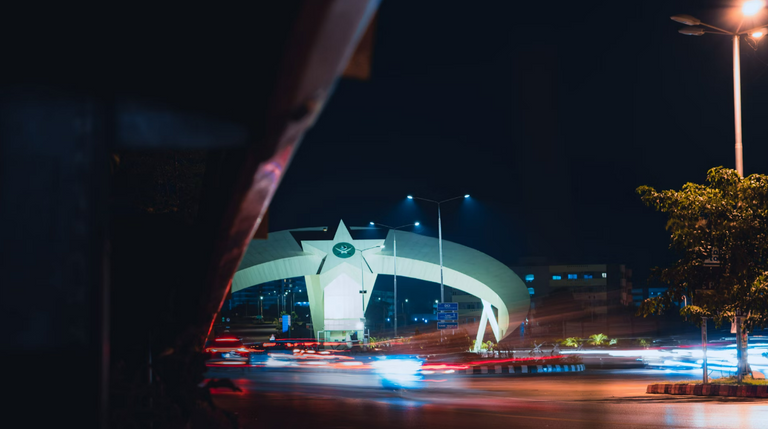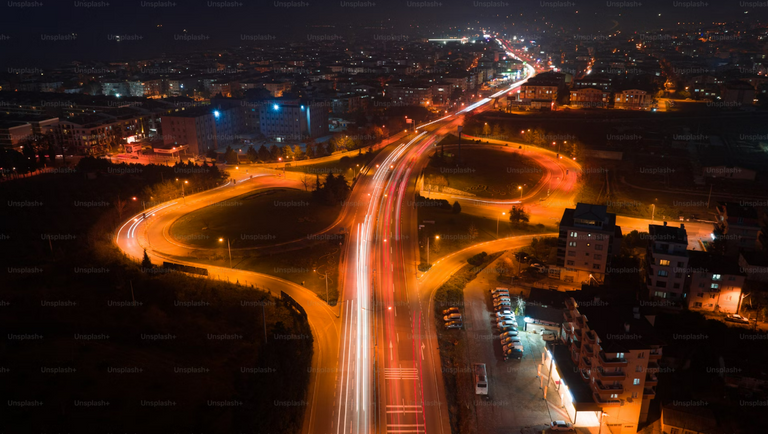urdu post:
Traffic control ek bara challenge hai aisay mulkon mein jahan population ziada hai aur infrastructure proper plan nahi kiya gaya. Pakistan aur India jese countries mein traffic ka masla sirf roads ki kami ya bad management ki wajah se nahi, balki logon ki driving habits aur law enforcement ki kamzori ki wajah se bhi hai. Agar hum is maslay ka behtareen hal chahtay hain, toh hume ek multi-dimensional approach leni hogi jo infrastructure, technology, aur public awareness ko saath le kar chale.
Sabse pehla step yeh hai ke traffic laws ko strictly implement kiya jaye. Bohot se log signal todte hain, wrong side chalte hain, aur over-speeding karte hain, jo accidents ka sab se bara sabab banta hai. Agar law enforcement agencies CCTV cameras aur AI-based monitoring systems ka istemal karein, toh in violations ko track karna aur fines impose karna asaan ho sakta hai. Lekin sirf fines lagana kaafi nahi, logon ko yeh samjhna hoga ke traffic rules sirf punishment ke liye nahi, balki unki apni safety ke liye hain.
Dusra bohot zaroori step hai public transportation system ko behtar banana. Jab tak logon ke paas achi aur reliable public transport nahi hogi, tab tak har shakhs apni private gaari ka istemal karega, jo traffic jam ka bara sabab hai. Agar government efficient bus services, metro trains, aur carpooling services ko promote kare, toh roads par vehicles ka load kam ho sakta hai. Yeh sirf convenience nahi, balki pollution aur fuel consumption ko bhi control karne ka tareeqa hai.
Infrastructure improvement bhi bohot zaroori hai. Signal-free corridors, flyovers, aur underpasses ka barhawa dena chahiye jahan traffic bohot ziada ho. Iske ilawa, parking spaces aur bus stops ko ache tareeke se manage karna chahiye taa ke illegal parking aur unnecessary roadblocks se jaan chhut sake. Urban planning ko futuristic approach se design karna hoga taa ke naye cities aur highways smart planning ke saath develop ho sakein.
Ek aur zaroori cheez awareness campaigns hain. Aksar logon ko pata hi nahi hota ke unke chhoti chhoti ghaltiyan traffic ke baray masail ka sabab banti hain. Schools, colleges, aur social media par traffic education ko promote karna chahiye taa ke log is maslay ko seriously lein. Agar log discipline follow karein, zebra crossings ka istemal karein, aur unnecessary horn bajana band karein, toh traffic flow bohot smoothly chal sakta hai.
Aakhir mein, hume alternative solutions par bhi focus karna chahiye jaise work-from-home culture ko promote karna aur staggered office timings rakhna taa ke har waqt roads par rush na ho. Yeh masla sirf government ka nahi, balki har shakhs ka hai, aur jab tak hum sab mil kar traffic discipline ko follow nahi karein ge, tab tak koi permanent solution nahi mil sakega.
Ek aur behtareen solution smart traffic management system ka istemal hai. Aaj kal AI aur IoT (Internet of Things) based traffic signals develop kiye ja rahe hain jo real-time traffic density ko analyze kar ke signals adjust karte hain. Agar Pakistan aur India jese baray mulkon mein yeh technology implement ki jaye, toh unnecessary signal delays aur traffic jams ko kaafi hat tak control kiya ja sakta hai. Saath hi saath, traffic lights ka proper functioning aur maintenance bhi ensure karni hogi taa ke kisi bhi emergency ya peak hours mein koi disruption na ho.
Bike lanes aur pedestrian-friendly roads bhi traffic control ka ek zaroori hissa hain. Bohot baar roads par cycle chalane walay aur pedestrians ke liye proper jagah nahi hoti, jiski wajah se log sarkon par chalne par majboor ho jate hain, jo na sirf unke liye dangerous hai, balki traffic flow bhi disturb hota hai. Agar dedicated bicycle lanes aur footpaths banaye jayein aur unko enforce bhi kiya jaye, toh yeh problem kaafi hat tak kam ho sakta hai. Iske ilawa, rickshaws aur chhoti commercial vehicles ke liye bhi alag routes plan karne chahiye taa ke wo main highways par unnecessary congestion create na karein.
Ride-sharing aur carpooling services ko bhi promote karna bohot zaroori hai. Har shakhs agar apni personal car lekar niklay ga, toh naturally traffic ka load barh jaye ga. Agar companies aur organizations apne employees ke liye carpooling facilities arrange karein ya phir government incentives dein ride-sharing apps ko use karne ke liye, toh cities mein road congestion bohot kam ho sakti hai. Iske ilawa, motorcycles aur electric scooters ko bhi encourage karna chahiye, jo kam jagah lete hain aur fuel consumption bhi kam karte hain.
Traffic problems ko solve karne ke liye ek aur zaroori cheez parking management hai. Bohot baar illegal parking ya double parking ki wajah se roads par unnecessary blockage hota hai, jo traffic jams aur accidents ka sabab banta hai. Agar har area mein properly designated parking zones hon aur illegal parking par strict actions liye jayein, toh roads open rahengi aur traffic smoothly move karega. Multi-story parking plazas aur automated parking systems ka bhi barhawa diya jana chahiye, jisse major commercial areas mein space ki kami ka masla hal ho sake.
Akhir mein, sabse bara solution civic responsibility hai. Har shakhs ko apni zimmedari samajhni hogi ke woh traffic rules ko strictly follow kare. Agar hum sab patience aur discipline ka مظاہرہ karein, unnecessary overtaking na karein, aur emergency vehicles ke liye rasta dein, toh traffic ka masla naturally behtar ho sakta hai. Yeh sirf ek government ya law enforcement ka kaam nahi, balki har ek citizen ki responsibility hai. Jab hum sab mil kar traffic control ke behtar tareeqe apnayein ge, tabhi hamari cities safer aur zyada organized ho sakein gi.
Ek aur bohot zaroori step public transport ki behtari hai. Pakistan aur India jese baray mulkon mein aksar logon ke paas apni gaari nahi hoti, lekin unreliable aur congested public transport ki wajah se log majbooran chhoti gaariyan ya bikes istemal karte hain, jo traffic ka load barhata hai. Agar sarkari aur private sectors mil kar buses, metro trains aur other mass transit systems ko upgrade karein, toh bohot log private transport ke bajaye inka istemal karein ge, jo traffic control mein madadgar sabit hoga.
Government ko ek aur step lena chahiye jo staggered work hours ka concept hai. Har shakhs agar ek hi time par office ya school ke liye niklay ga, toh naturally roads par extreme rush hoga. Agar companies, schools aur institutions apni timings ko shift-wise adjust karein, toh traffic ka burden evenly distribute ho sakta hai. Yeh idea duniya ke bohot se baray shehron mein kaamyaab raha hai, aur South Asian countries mein bhi isay implement karne ka waqt aa gaya hai.
Technology ka aur ziada istemal bhi ek behtareen hal ho sakta hai. Smart parking systems jo real-time mein logon ko bata sakein ke kahan parking available hai, AI-based traffic flow management jo congestion ko predict karke alternate routes suggest karein, aur automated challan systems jo law-breakers ko immediately fine karein, yeh sab solutions Pakistan aur India jese baray aur congested mulkon ke liye bohot zaroori hain. Digital solutions ke bina modern traffic problems ko solve karna mushkil hai.
Traffic education bhi bohot important factor hai. School aur colleges ke syllabus mein road safety aur traffic awareness ko shamil karna chahiye taa ke bachpan se logon ko samajh aa jaye ke sahi aur ghalat driving habits kya hain. Aksar drivers signal todna, lane changing aur over-speeding ko ek normal baat samajhte hain, jo sirf unki apni jaan ko nahi, balki doosron ki jaan ko bhi khatre mein daalti hai. Is education ko campaigns aur social media ke zariye bhi promote karna chahiye.
Ek aur bohot zaroori point hai ke roads ka infrastructure mazid behtar banaya jaye. Kayi jagahon par traffic is wajah se bhi slow ho jata hai kyunki roads proper nahi hain, speed breakers ghalat jagah par hain, ya phir potholes aur construction ki wajah se traffic disrupt hota hai. Agar government regular maintenance aur smart road planning kare, toh unnecessary traffic jams kaafi hat tak kam ho sakte hain. Saath hi, signal-free corridors aur dedicated lanes ka ziada istemal bhi bohot zaroori hai.
Bohot se mulkon mein remote work aur online education kaafi promote ho chuka hai, lekin Pakistan aur India mein abhi bhi log har chhoti meeting ya kaam ke liye physically office ya school jate hain. Agar work-from-home aur online classes ka trend barhaya jaye, toh unnecessary travel aur traffic ka load kaafi hat tak kam ho sakta hai. Yeh sirf traffic control ka nahi, balki pollution aur fuel consumption ka bhi masla hal kar sakta hai.
Akhir mein, traffic management sirf government ki responsibility nahi hai, balki har shakhs ka kaam hai. Har driver ko apni zimmedari samajhni hogi ke woh traffic laws follow kare, unnecessary horn na bajaye, pedestrians ka khayal rakhe, aur patience ka مظاہرہ kare. Jab tak logon ki mentality nahi badlegi, tab tak infrastructure aur technology kaafi nahi hogi. Agar hum sab mil kar discipline follow karein, toh congested aur populated shehron mein bhi traffic ka masla hal ho sakta hai.
Ek aur zaroori strategy road zoning aur alternate routes ka behtar istemal hai. Bohot se shehron mein ek hi major road par saara traffic concentrate ho jata hai, jiski wajah se rush aur jams barh jate hain. Agar government proper road zoning kare aur different categories ke vehicles ke liye alag-alag routes allocate kare, toh traffic smoothly flow kar sakta hai. Iske ilawa, flyovers aur underpasses bhi congested areas mein bohot madadgar ho sakte hain.
Public awareness campaigns bhi traffic management ka ek aham hissa hain. Aksar log traffic rules follow nahi karte sirf is liye kyunki unhe unka pata hi nahi hota ya phir woh inko serious nahi lete. Agar government aur NGOs mil kar TV, radio aur social media par traffic awareness campaigns chalayein, jisme logon ko traffic rules ka importance samjhaya jaye, toh behavior mein behtari layi ja sakti hai. Har shakhs ko yeh samajhna chahiye ke signal todna sirf ek chhoti ghalti nahi, balki kisi ki zindagi ko khatre mein dalne ke barabar hai.
Ek aur behtar solution urban planning aur city expansion ka hai. Bohot se baray shehr, jaise Karachi, Mumbai, Delhi, aur Lahore, overpopulated ho chuke hain, aur infrastructure inka load uthane ke qabil nahi raha. Agar naye shehr aur townships develop kiye jayein aur business hubs ko multiple locations par distribute kiya jaye, toh logon ko unnecessarily central areas mein travel karne ki zaroorat nahi hogi. Is tarah ka decentralization traffic issues ko drastically kam kar sakta hai.
Pedestrian bridges aur walkways bhi traffic control mein madad de sakte hain. Bohot jagahon par log bina zebra crossing ya pedestrian bridge ke beech road cross karne ki koshish karte hain, jiski wajah se accidents aur traffic blockages hoti hain. Agar har major road par pedestrian bridges ya safe crossings banayi jayein aur unka strict implementation ho, toh na sirf pedestrians ki safety barhay gi, balki traffic ka flow bhi behtar ho jaye ga.
Akhir mein, strict law enforcement aur penalties bohot zaroori hain. Jab tak logon ko traffic violations ka dar nahi ho ga, tab tak rules follow nahi kiye jayein ge. Agar CCTV cameras aur e-challan system ko ziada behtar banaya jaye, aur signal todne, wrong parking, aur over-speeding par heavy fines lagaye jayein, toh log naturally disciplined ho jayein ge. Saath hi, driving licenses sirf unhi logon ko milne chahiye jo proper driving test clear karein, taa ke roads par sirf trained drivers hi hon.
english post:
Traffic control is a big challenge in areas where the population is high and the infrastructure is not properly planned. In countries like Pakistan and India, the traffic problem is not just due to lack of roads or bad management but also due to people's driving habits and weak law enforcement. If we want a better solution to this problem, we need to take a multi-dimensional approach that takes together infrastructure, technology, and public awareness.
The first step is to strictly implement traffic laws. Many people break signals, drive on the wrong side, and over-speed, which causes the biggest cause of accidents. If law enforcement agencies use CCTV cameras and AI-based monitoring systems, it could be easier to track these violations and impose fines. But just imposing fines is not enough, people will have to understand that traffic rules are not just for punishment but for their own safety.
The second very important step is to improve the public transportation system. Until people have good and reliable public transport, everyone will use his own private car, which is responsible for traffic jams. If the government promotes efficient bus services, metro trains, and carpooling services, the load of vehicles on the roads can be reduced. This is not just convenience but also a way to control pollution and fuel consumption.
Infrastructure improvement is also very important. Signal-free corridors, flyovers, and underpasses should be promoted where there is heavy traffic. Apart from this, parking spaces and bus stops should be managed well to avoid illegal parking and unnecessary roadblocks. Urban planning has to be designed with a futuristic approach so that new cities and highways can be developed with smart planning.
Another important thing is awareness campaigns. Often people are not aware that their small mistakes become a major problem regarding traffic. Traffic education should be promoted in schools, colleges, and on social media so that people take this issue seriously. If people follow discipline, use zebra crossings, and stop unnecessary horn blowing, then traffic flow can run very smoothly.
Finally, we should also focus on alternative solutions like promoting work-from-home culture and keeping staggered office timings so that there is no rush on the roads all the time. This is not just a government's issue, but of every person, and until we all come together and follow traffic discipline, no permanent solution will be found.
Another better solution is the use of smart traffic management system. Nowadays, AI and IoT (Internet of Things) based traffic signals are being developed which adjust the signals by analysing the traffic density in real-time. If this technology is implemented in big countries like Pakistan and India, then unnecessary signal delays and traffic jams can be controlled to a great extent. Along with this, proper functioning and maintenance of traffic lights also have to be ensured so that there is no disruption during any emergency or peak hours.
Bike lanes and pedestrian-friendly roads are also an important part of traffic control. Many times there is no proper place for cyclists and pedestrians on the roads, due to which people are forced to walk on the roads, which is not only dangerous for them but also disturbs the traffic flow. If dedicated bicycle lanes and footpaths are made and enforced, this problem can be reduced to a great extent. Apart from this, separate routes should also be planned for rickshaws and small commercial vehicles so that they do not create unnecessary congestion on the main highways.
It is also important to promote ride-sharing and carpooling services. If every person goes out with his personal car, the traffic load will naturally reduce. If companies and organizations arrange carpooling facilities for their employees or the government gives incentives for using ride-sharing apps, then road congestion in cities can be reduced considerably. Apart from this, motorcycles and electric scooters should also be encouraged, which take less space and also reduce fuel consumption.
Another important thing to solve traffic problems is parking management. Many times, unnecessary blockages occur on roads due to illegal parking or double parking, which causes traffic jams and accidents. If every area has properly designated parking zones and strict action is taken against illegal parking, then the roads will remain open and traffic will move smoothly. Multi-story parking plazas and automated parking systems should also be promoted so that the problem of shortage of space in major commercial areas can be solved.
Ultimately, the best solution is civic responsibility. Every person should understand his responsibility to strictly follow the traffic rules. If we all exercise patience and discipline, avoid unnecessary overtaking, and give way to emergency vehicles, then the traffic problem can naturally improve. This is not just the job of a government or law enforcement, but the responsibility of every citizen. When we all work together to adopt better methods of traffic control, only then will our cities become safer and more organized.
Another very important step is improvement of public transport. In poor countries like Pakistan and India, people often do not have their own car, but due to unreliable and congested public transport, people are forced to use small cars or bikes, which increases the traffic load. If the government and private sectors together upgrade buses, metro trains and other mass transit systems, then many people will use them instead of private transport, which will help in traffic control.
One more step that the government should take is the concept of staggered work hours. If every branch leaves for office or school at the same time, then naturally there will be extreme rush on the roads. If companies, schools and institutions adjust their timings shift-wise, the burden of traffic can be distributed evenly. This idea is working in many bad cities of the world, and the time has come to implement it in South Asian countries as well.
More use of technology can also be a better solution. Smart parking systems that can tell people in real-time where parking is available, AI-based traffic flow management that predicts congestion and suggests alternate routes, and automated challan systems that immediately fine law-breakers, all these solutions are very important for bad and congested countries like Pakistan and India. Solving modern traffic problems is difficult without digital solutions.
Traffic education is also a very important factor. Road safety and traffic awareness should be included in the syllabus of schools and colleges so that people understand from childhood what are the right and wrong driving habits. Often drivers consider breaking signals, changing lanes and over-speeding as a normal thing, which not only endangers their own lives but also the lives of others. This education should also be promoted through campaigns and social media.
Another very important point is that the infrastructure of the roads should be improved. At many places the traffic slows down because the roads are not proper, speed breakers are placed at the wrong places, or the traffic gets disrupted because of potholes and construction. If the government does regular maintenance and smart road planning, then unnecessary traffic jams can be reduced to a great extent. Also, more use of signal-free corridors and dedicated lanes is also very important.
Remote work and online education have already been promoted a lot in many countries, but in Pakistan and India people still go to physical office or school for small meetings or work. If the trend of work-from-home and online classes is promoted, then unnecessary travel and traffic load can be reduced to a great extent. This can solve not just traffic control but also pollution and fuel consumption issues.
In the end, traffic management is not just the responsibility of the government but the job of every individual. Every driver must understand his responsibility to follow traffic laws, not blow the horn unnecessarily, take care of pedestrians and exercise patience. Until the mentality of people does not change, the infrastructure and technology will not be enough. If all of us come together and follow discipline, then the traffic issue can be solved even in congested and populated cities.
Another important strategy is road zoning and better use of alternate routes. In many cities, all the traffic gets concentrated on one major road, leading to rush and jams. If the government does proper road zoning and allocates separate routes for different categories of vehicles, then traffic can flow smoothly. Apart from this, flyovers and underpasses can also be of great help in congested areas.
Public awareness campaigns are also an important part of traffic management. Often people do not follow traffic rules only because they are not aware of them or they do not take them seriously. If the government and NGOs together run traffic awareness campaigns on TV, radio and social media, in which the importance of traffic rules is made clear to people, then improvement in behaviour can be brought about. Every person should understand that breaking a signal is not just a small mistake but is equivalent to putting someone's life at risk.
Another better solution is urban planning and city expansion. Many big cities, like Karachi, Mumbai, Delhi and Lahore, have become overpopulated and the infrastructure is not capable of handling their load. If new cities and townships are developed and business hubs are distributed across multiple locations, then people will not need to unnecessarily travel to central areas. This kind of decentralization can drastically reduce traffic issues.
Pedestrian bridges and walkways can also help in traffic control. In many places, people try to cross the road without a zebra crossing or pedestrian bridge, causing accidents and traffic blockages. If pedestrian bridges or safe crossings are built on every major road and their strict implementation is done, then not only will the safety of pedestrians be improved, but the flow of traffic will also improve.
Ultimately, strict law enforcement and penalties are very necessary. Unless people are afraid of traffic violations, they will not follow the rules. If CCTV cameras and e-challan system are made better, and heavy fines are imposed on jumping signals, wrong parking, and over-speeding, then people will naturally get disciplined. Also, driving licenses should be given only to those people who clear the proper driving test, so that only trained drivers should be on the roads.
